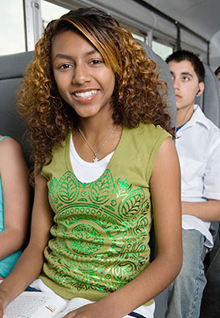 Take a moment to think about the last photo taken on your cell phone or device. When shared with others, photos stimulate lots of recall and discussion. Have you noticed that when someone is in a photo he or she moves closer or zooms in to get a better glimpse and the person listens more intently to the retelling of the photo’s context or story? Similarly, photos capturing students engaged in special moments, events, or activities provide educators with powerful opportunities to actively involve students in meaningful and highly motivational oral language, reading, and writing experiences.
Take a moment to think about the last photo taken on your cell phone or device. When shared with others, photos stimulate lots of recall and discussion. Have you noticed that when someone is in a photo he or she moves closer or zooms in to get a better glimpse and the person listens more intently to the retelling of the photo’s context or story? Similarly, photos capturing students engaged in special moments, events, or activities provide educators with powerful opportunities to actively involve students in meaningful and highly motivational oral language, reading, and writing experiences.
A photograph can be a powerful motivator and memory stimulator to retrieve specialized vocabulary and oral language conventions contextualized in an event. Oral retelling embedded within the activity and composed in text next to a photograph scaffolds reading. When photos are uploaded to apps, social media sites, or printed and assembled into personalized books, students engage further in important rereading activities that stimulate reading development.
Use photos to learn a new language
Depending on interest and needs, text composed near a photo might include specialized vocabulary, phrases, sight words, or sentences that reinforce grammatical structure. Recently, this technique was used in class while learning Spanish. We constructed various reading materials using photographs from Costa Rica. Text composed below a photo showed us standing next to a green tree to learn the Spanish word verde. When a monkey was outside our bedroom window, we took its photo to focus on learning animal names such as mono. Other photos and text consisted of learning names for food and everyday conversational phrases. Using QuickVoice Recorder, we recorded oral rereadings to measure proficiency in speaking Spanish.
Develop vocabulary
Educators can purposefully sprinkle Tier Two words into conversations and use a camera to photograph events. For example, while children were eating spaghetti at an after-school program, a staff member used the words scrumptious, morsels, and devour to describe how and what the children ate. Later, the photos were projected on the wall and children were encouraged to use Tier Two words in sentences to talk about or act out the event in the photograph. Photos were also printed and added to a vocabulary wall for “reading around the room” activities.
Motivate secondary students
Screenshots of images viewed on the Internet or photographs taken with a camera of a particular topic can be imported to an app. Pic Talk offers a comic style way to create speech bubbles, to bring words to life, and showcase learning. The app offers lots of editing tools to personalize learning and can be shared on social media sites, sent as a text message, or e-mailed.
Support emergent and beginning readers at home
Photographs capturing children in activities provide indispensable access to materials to reinforce reading skills. A series of photographs might be taken of a child working in a family garden. Photos and oral retellings dictated from a child to an adult are typed next to each photograph telling how the soil was prepared and how the seeds were planted and watered, telling about first sprout sightings, and telling about how much the vines grew when measured by inches and feet. Photos can be uploaded to Read With Me Kids Book Maker and a personalized picture book created. Words are highlighted, and books can be read online with family. Photos can also be printed and combined into a book titled “My First Garden” and uploaded to Wix, Facebook, Instagram, or Twitter for global sharing with family members and friends.
Encourage reading and writing in school
Teachers can keep a camera nearby to capture special moments and give students something to talk, write, and read about. For example, photos of playground rules can be projected onto a dry erase board or interactive whiteboard. Children’s oral statements are immediately typed or written under the photo by the teacher, and students choral or echo read words and sentences while teacher tracks text with a pointer or a cursor. Such experiences are further reinforced when photographs are uploaded to a class webpage or when printed and reread to peers and family members. Important oral language, academic language, phonics, fluency, vocabulary, and comprehension are integrated into meaningful literacy experiences.
 Tammy Ryan has over 25 years of teaching experience. She is an associate professor of reading education at Jacksonville University, where she teaches undergraduate and graduate courses in literacy. Her research focuses on beginning readers, digital learning, and international teaching experiences.
Tammy Ryan has over 25 years of teaching experience. She is an associate professor of reading education at Jacksonville University, where she teaches undergraduate and graduate courses in literacy. Her research focuses on beginning readers, digital learning, and international teaching experiences.
This article is part of a series from the International Literacy Association’s Technology in Literacy Education Special Interest Group (TILE-SIG).